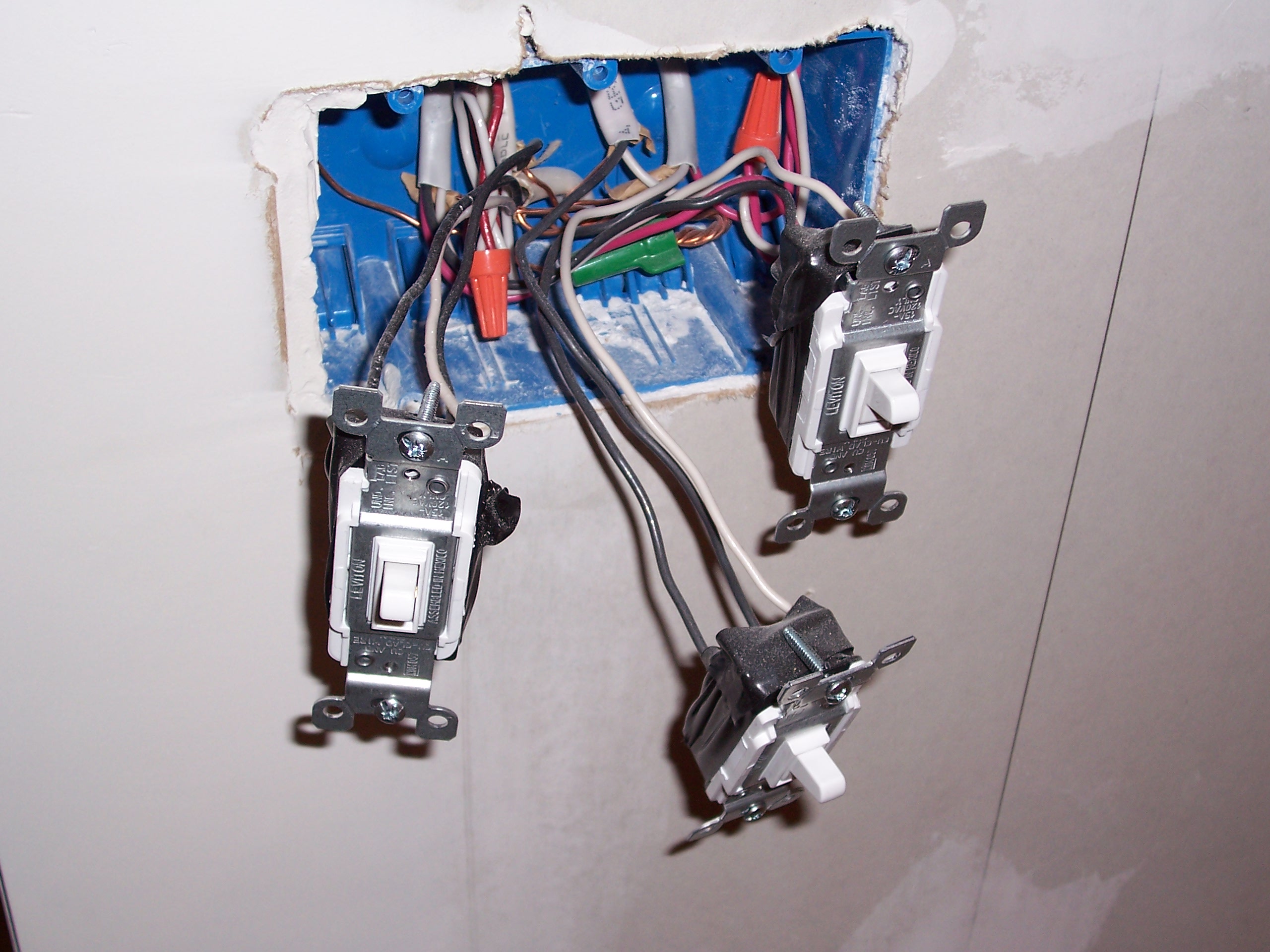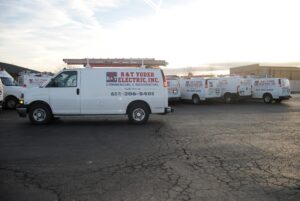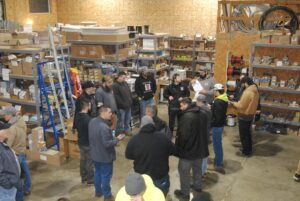
Light switches. Small, unassuming, yet absolutely integral to modern living. From illuminating your workspace to setting the perfect ambiance for a cozy evening, switches are the silent workhorses of your electrical system. Yet, like any other household component, they’re not immune to wear and tear.
A malfunctioning switch isn’t just an inconvenience; it’s a potential safety hazard. Electrical sparks, overheating, or an unresponsive switch could indicate underlying wiring issues. Professional switch repair services ensure your home remains both functional and safe, offering peace of mind with every flick of the switch.
Common Causes of Switch Malfunctions
Light switches may seem straightforward, but behind that plastic faceplate lies a complex network of wires and contacts. Understanding what causes them to malfunction helps homeowners act swiftly.
1. Worn-Out Contacts
Switches operate via internal contacts that open and close circuits. Over time, these contacts wear out, leading to flickering lights or delayed responses.
2. Loose Wiring
Vibration from daily usage can loosen wires, disrupting electrical flow. Loose connections pose fire risks if left unattended.
3. Short Circuits and Overloads
Excessive current can cause wires to overheat, melting insulation and damaging switches. This often stems from overloaded circuits or faulty devices.
4. Aging Components
Switches don’t last forever. Older homes, especially those with original wiring, often experience performance issues due to aging infrastructure.
5. Moisture Intrusion
Bathrooms and kitchens, where moisture levels are high, often suffer from switch corrosion. Water and electricity—a dangerous duo—make timely repairs critical.
Signs You Need Immediate Switch Repair
Ignoring a malfunctioning switch is like disregarding a rattling engine in a car. The issue may seem minor at first but can quickly escalate. Here are telltale signs it’s time to call the experts:
- Sparking: A visible spark when flipping the switch is a glaring red flag.
- Crackling Sounds: Electrical systems should be silent. Crackling indicates arcing, which can lead to fires.
- Inconsistent Operation: If a light flickers or takes a moment to respond, the switch contacts are likely worn.
- Warm or Hot Switch Plates: Overheating suggests excessive current flow or poor wiring connections.
- Discoloration or Burn Marks: Burnt or discolored areas are evidence of past overheating and potential wiring issues.
The Switch Repair Process: What to Expect
When you hire professionals for switch repair, you’re not just getting a quick fix—you’re ensuring long-term safety and reliability. Here’s a glimpse into the process:
1. Initial Assessment
The technician begins with a visual inspection, checking for external damage, discoloration, or misalignment. They’ll also ask about any performance irregularities you’ve noticed.
2. Power Shutdown
Safety first. The power to the affected circuit is turned off to prevent accidental shocks during repairs.
3. Switch Removal and Internal Inspection
With the faceplate removed, the internal components are examined. The electrician looks for signs of corrosion, loose wires, or burnt connectors.
4. Repair or Replacement
- Minor Issues: Loose wires are re-secured, and dirty contacts cleaned.
- Severe Damage: When components are compromised, the entire switch is replaced.
5. Testing and Final Checks
The power is restored, and the switch is tested multiple times to ensure smooth operation. Voltage measurements confirm proper electrical flow.
Understanding the Different Types of Light Switches
Not all switches are created equal. When repairs are needed, understanding the type of switch you have can streamline communication with professionals.
1. Single-Pole Switches
The most common household switch, controlling a single light fixture from one location.
2. Three-Way Switches
Installed in pairs, these switches control the same light from two different locations—ideal for staircases and hallways.
3. Four-Way Switches
These switches add more control points to three-way setups, enabling operation from three or more locations.
4. Dimmer Switches
Dimmer switches adjust brightness levels, but their electronic components are more susceptible to wear than standard models.
5. Smart Switches
Wi-Fi-enabled and compatible with smart home systems, these switches allow remote control via apps or voice commands.
Dangers of DIY Switch Repairs
The allure of DIY electrical work is understandable—it’s cheaper and seemingly straightforward. But electrical systems are inherently hazardous. Mishandling wiring or using incorrect components can have severe consequences.
Top Risks of DIY Switch Repairs:
- Electric Shock: Even a standard 120-volt line can cause injury or death if mishandled.
- Code Violations: Electrical work must comply with local codes. Unlicensed DIY work often violates these standards.
- Fire Hazards: Improper connections and inferior materials increase the risk of electrical fires.
- Invalidated Insurance: Many home insurance policies exclude damage from unlicensed electrical work.
The Advantages of Professional Switch Repair Services
Hiring professionals for switch repair ensures both safety and reliability. Beyond fixing the immediate problem, electricians assess the entire system to prevent future issues.
Key Benefits:
- Accurate Diagnosis: Professionals use specialized tools to identify the root cause, not just symptoms.
- High-Quality Components: Licensed electricians source durable, code-compliant materials.
- Time Efficiency: Experts complete repairs faster and more efficiently than the average DIY enthusiast.
- Warranty Protection: Reputable companies often provide warranties for labor and parts.
Energy Efficiency and Modern Switches
Energy efficiency is no longer just a buzzword; it’s a necessity. Upgrading or repairing switches can significantly impact your home’s energy consumption.
How Modern Switches Improve Efficiency:
- Dimmers: Reduce power usage by controlling light intensity.
- Occupancy Sensors: Turn lights on/off based on room occupancy, eliminating waste.
- Smart Switches: Allow remote operation and usage tracking, helping you identify energy hogs.
Smart Switches: The Future of Lighting Control
As homes grow smarter, so do their switches. Smart switches integrate with home automation systems, offering a blend of convenience, security, and efficiency.
🚀 Features of Smart Switches:
- Remote Control: Adjust lighting from anywhere via smartphone apps.
- Voice Activation: Compatible with Alexa, Google Assistant, and Siri.
- Scheduling and Automation: Set schedules to mimic occupancy when away.
- Energy Monitoring: Track real-time electricity consumption.
Maintenance Tips to Extend Switch Lifespan
Switches may seem durable, but regular maintenance can prevent malfunctions.
Proactive Maintenance Practices:
- Clean Regularly: Dust buildup can hinder functionality.
- Inspect for Heat: Periodically touch switch plates; warmth may indicate wiring issues.
- Test GFCIs: Ground-fault circuit interrupters should be tested monthly.
- Schedule Inspections: Have a licensed electrician inspect wiring every few years.
FAQ Section
1. How can I tell if my light switch needs repair?
Look for flickering lights, crackling sounds, warm plates, or unresponsiveness. If any of these symptoms appear, call a professional immediately.
2. How long does a typical switch repair take?
Most switch repairs take 30-60 minutes. However, complex issues like rewiring or switch replacement may extend the duration.
3. Is it possible to upgrade old switches with smart switches?
Absolutely. Smart switches can often replace traditional switches with minimal wiring adjustments, provided the electrical system supports them.
4. Are buzzing switches dangerous?
Yes. Buzzing typically indicates a loose connection, internal damage, or an overload. Immediate inspection is recommended.
5. What should I do if a switch suddenly stops working?
First, check the circuit breaker. If the breaker is intact and the switch remains unresponsive, contact a professional for a thorough assessment.
Don’t let a malfunctioning switch disrupt your home’s comfort or jeopardize your safety. Electrical issues, no matter how minor they seem, can escalate into costly and dangerous problems.
Our expert switch repair services offer quick, reliable, and lasting solutions to keep your home’s electrical system running smoothly. From diagnosing stubborn switches to installing modern smart systems, we handle it all with precision and care.
Contact us today to schedule your switch repair and experience the ease of professional, worry-free electrical service.







